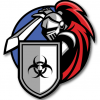Windows 10 bootcamp partition on Imac issue
#1

 Posted 15 June 2018 - 07:28 PM
Posted 15 June 2018 - 07:28 PM

#2

 Posted 15 June 2018 - 08:04 PM
Posted 15 June 2018 - 08:04 PM

Type or copy and paste the commands below and press Enter after each one.
Change all c:/ commands to the correct Windows drive letter below. If you need help determining the correct drive letter then copy and paste the following command:
bcdedit |find "osdevice" (this will display the correct Windows drive letter) see following example:
C:\WINDOWS\system32>bcdedit |find "osdevice"
osdevice partition=C:
1. d:\
2. cd d:\windows\system32\config\regback
3. Dir (This will list the contents of regback, note the date and be sure that the contents are not empty. If it is empty then this will not work STOP and DO NOT proceed
1. copy *.* d:\windows\system32\config (press enter)
2. Select ALL to the override prompt, it will say files copied, 5 hives will be copied
3. Restart computer and test
#3

 Posted 15 June 2018 - 08:36 PM
Posted 15 June 2018 - 08:36 PM

Thanks for responding ![]()
As I mentioned earlier I really have no idea what i'm doing so hopefully I don't look too stupid here lol!
When I open up the command bar the entry is "X:\windows\system32>" I then entered in c: which gave me "C:\" then I put exactly step 2 in and it told me "the system cannot find the path specified"?
From the command window perform the following. Let me know if any questions.
Type or copy and paste the commands below and press Enter after each one.
Change all c:/ commands to the correct Windows drive letter below. If you need help determining the correct drive letter then copy and paste the following command:
bcdedit |find "osdevice" (this will display the correct Windows drive letter) see following example:
C:\WINDOWS\system32>bcdedit |find "osdevice"
osdevice partition=C:
1. d:\
2. cd d:\windows\system32\config\regback
3. Dir (This will list the contents of regback, note the date and be sure that the contents are not empty. If it is empty then this will not work STOP and DO NOT proceed
1. copy *.* d:\windows\system32\config (press enter)
2. Select ALL to the override prompt, it will say files copied, 5 hives will be copied
3. Restart computer and test
#4

 Posted 15 June 2018 - 09:26 PM
Posted 15 June 2018 - 09:26 PM

Is this the command you copied and pasted
bcdedit |find "osdevice"
#5

 Posted 15 June 2018 - 09:35 PM
Posted 15 June 2018 - 09:35 PM

Yeah that is the command I used and it said the partition was C:
Nobody looks stupid that why we are all here to help one another.
Is this the command you copied and pasted
bcdedit |find "osdevice"
#6

 Posted 17 June 2018 - 11:27 AM
Posted 17 June 2018 - 11:27 AM

Similar Topics
0 user(s) are reading this topic
0 members, 0 guests, 0 anonymous users
As Featured On:















 Sign In
Sign In Create Account
Create Account

